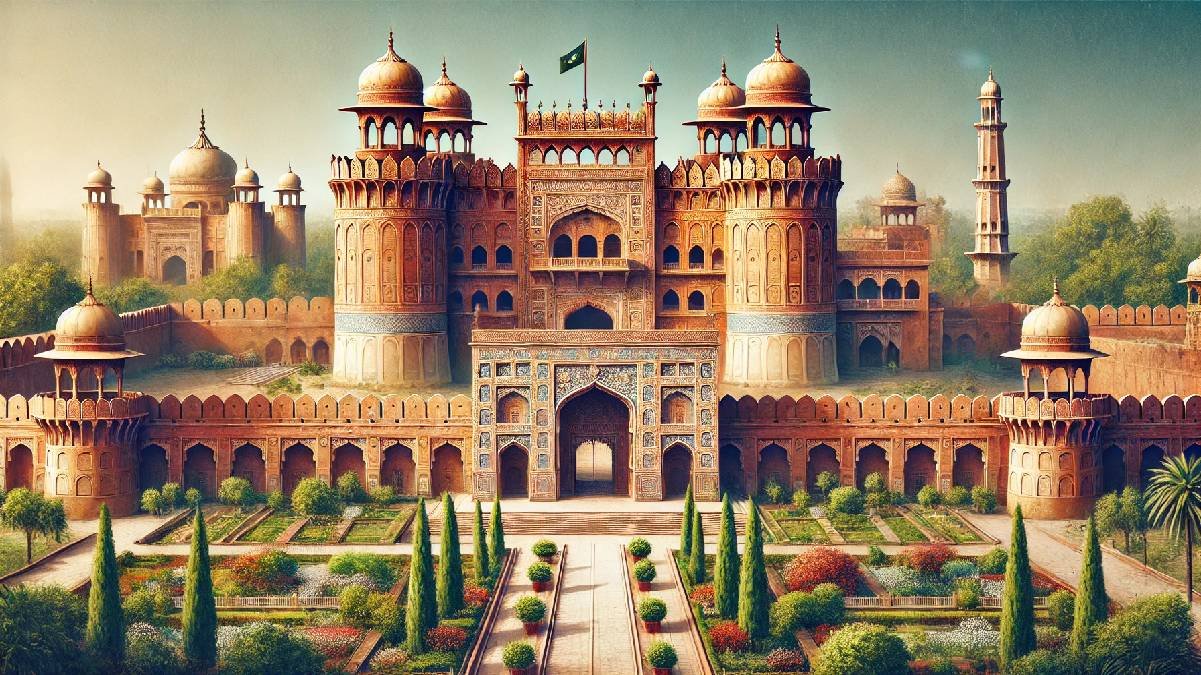
Lahore Fort, also known as Shahi Qila, is a magnificent fortress in the heart of Lahore, Pakistan. It is one of the city’s most iconic landmarks and a prime example of Mughal architecture. The fort covers an area of over 20 hectares and is situated in the northwestern corner of the Walled City of Lahore. Lahore Fort holds immense historical and cultural significance for Pakistan. It has been the site of numerous historical events and witnessed various empires’ rise and fall. The fort’s grandeur and historical importance make it a symbol of Pakistan’s rich heritage. The fort’s architecture, with its blend of Persian, Islamic, and Indian influences, reflects the cultural amalgamation that has shaped the region.
Table of Contents
ToggleLahore Fort History
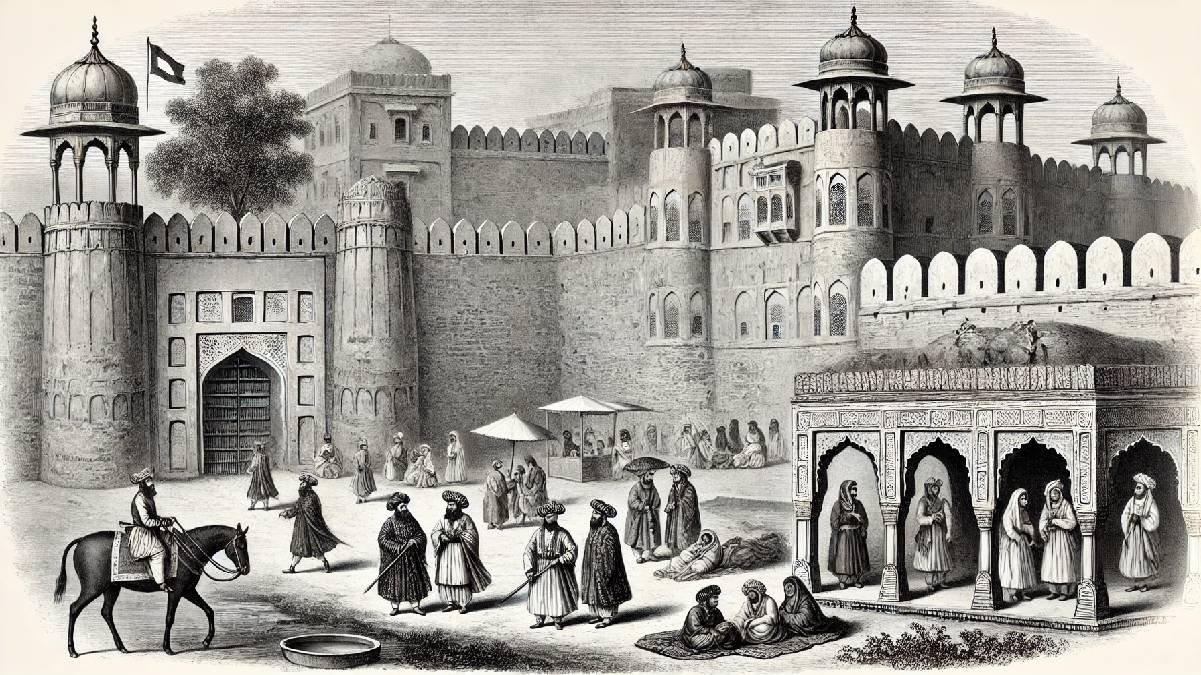
Historical Background
The Lahore Fort has a long history, dating back to the 11th century. It was extensively rebuilt during the Mughal era, particularly under Emperor Akbar. Originally a mud-brick structure, it was transformed into a grand fortification. The fort served as a royal residence and administrative center during the Mughal period and played a significant role under Emperors Jahangir and Shah Jahan, with notable architectural additions like the Sheesh Mahal.
Lahore Fort Location
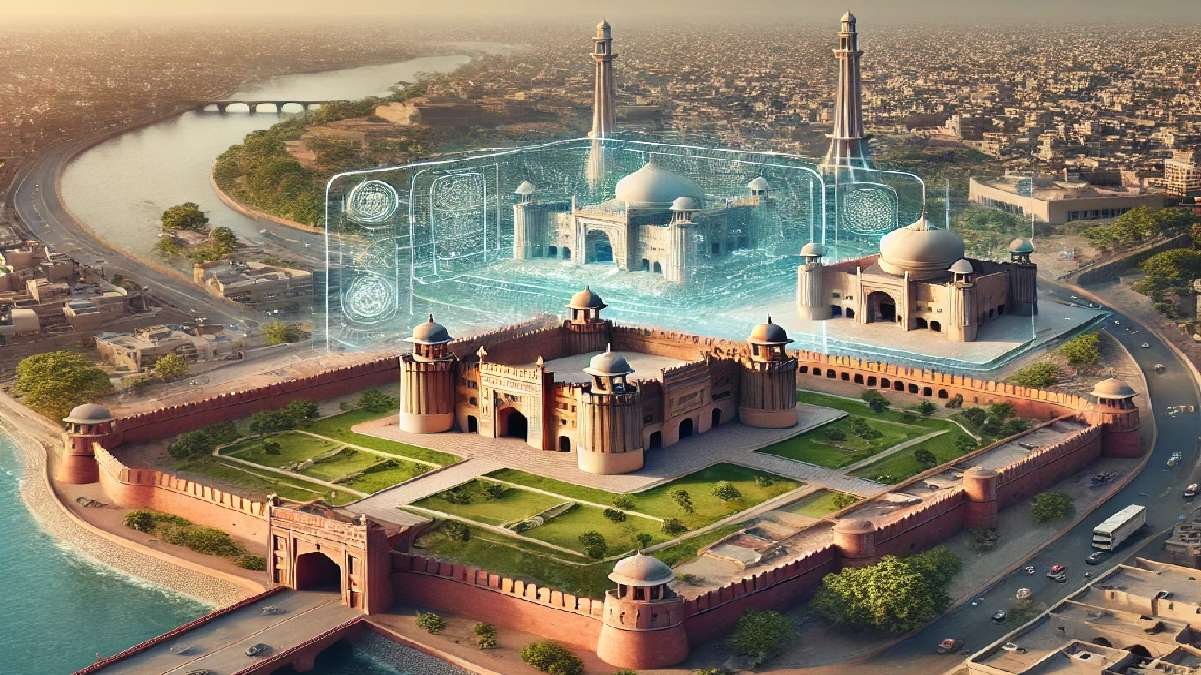
The exact location of Lahore Fort
Lahore Fort, also known as Shahi Qila, is situated in the northwestern corner of the Walled City of Lahore, Pakistan. It lies adjacent to the Badshahi Mosque, another historic monument, and is easily accessible from various parts of the city. The fort’s coordinates are approximately 31.5886° N latitude and 74.3091° E longitude.
Description of the Surrounding Area
The surrounding area of Lahore Fort is rich in historical and cultural landmarks. To the immediate west of the fort lies the magnificent Badshahi Mosque, one of the largest mosques in the world. To the south, you can find the bustling markets and streets of the old city, known for its vibrant atmosphere and traditional crafts. The fort is also close to the Minar-e-Pakistan, a national monument that symbolizes Pakistan’s independence. The area is a blend of historical significance and modern-day hustle and bustle, making it a focal point for both tourists and locals.
Sheesh Mahal Lahore Fort
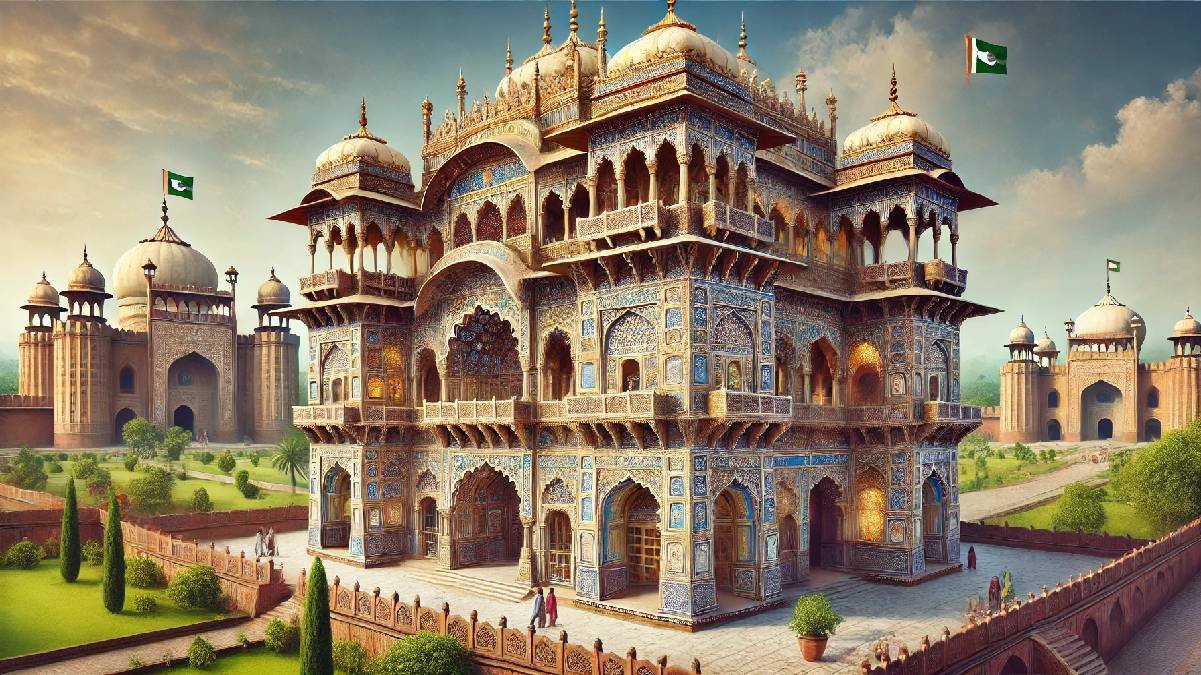
Sheesh Mahal, also known as the Palace of Mirrors, is one of the most exquisite structures within Lahore Fort. Constructed during the reign of Emperor Shah Jahan in 1631–32, this stunning palace is located in the Shah Burj block in the north-western corner of the fort. The Sheesh Mahal is renowned for its intricate mirrorwork and lavish decoration. The walls and ceilings of the palace are adorned with a myriad of small, intricately designed mirror pieces set into stucco tracery, creating a dazzling effect that reflects light in multiple directions. The palace also features beautifully painted frescoes, marble inlays, and pietra dura work, making it a masterpiece of Mughal architecture.
Historical Significance and Artistic Features
The Sheesh Mahal was built as a private residence for the royal family and served as a place for relaxation and enjoyment. Its construction reflects the opulence and grandeur of the Mughal era, showcasing the artistic and architectural prowess of the period. The use of mirrors in the palace is not just decorative but also symbolic, representing the beauty and splendour of the Mughal court. The artistic features of Sheesh Mahal include:
Mirror Work (Aina Kari)
Tiny convex mirrors embedded in intricate patterns create stunning visual effects.
Frescoes
Vibrant paintings depict various themes, including floral motifs, court scenes, and mythical stories.
Marble Inlay
Delicate inlay work uses precious and semi-precious stones to create intricate designs.
Pietra Dura
An art technique where highly polished colored stones are cut and fitted to create images.
Built Lahore Fort
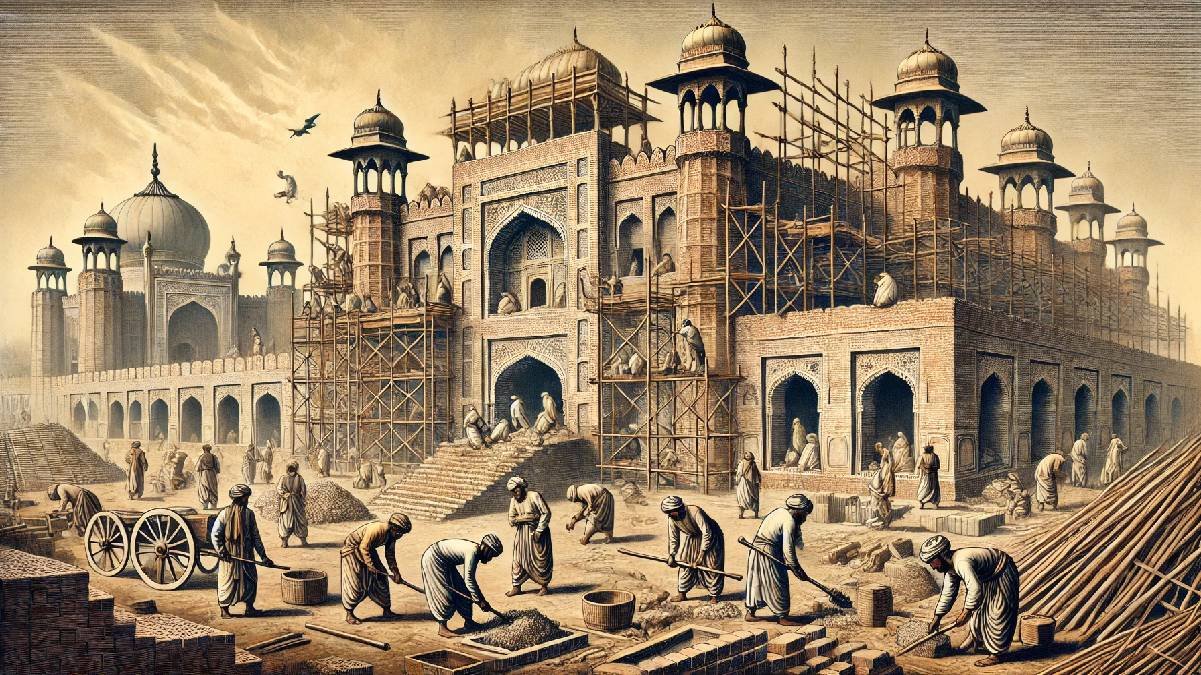
The construction of Lahore Fort is attributed to various rulers and dynasties over several centuries. The original fortifications are believed to date back to antiquity, with major developments occurring during the reigns of Mughal emperors, particularly Akbar the Great, who initiated significant reconstruction and expansion in the late 16th century. Subsequent Mughal emperors, along with the Sikh and British rulers, further contributed to its development and preservation.
Mughal Dynasty
Akbar the Great (1556-1605)
Akbar extensively rebuilt the fort using brick and added several key structures, transforming it into a formidable military and administrative center. His contributions laid the foundation for the fort’s Mughal architectural style.
Jahangir (1605-1627)
Jahangir added various gardens and palaces, including the construction of the Picture Wall, adorned with intricate tile work and frescoes.
Shah Jahan (1628-1658)
Under Shah Jahan, the fort saw the addition of luxurious structures such as the Sheesh Mahal, Naulakha Pavilion, and Diwan-i-Khas, reflecting the emperor’s penchant for white marble and ornate decoration.
Aurangzeb (1658-1707)
Aurangzeb constructed the Alamgiri Gate, a grand entrance that remains one of the most iconic features of Lahore Fort.
Sikh Empire
Maharaja Ranjit Singh (1780–1839)
During Sikh rule, the fort underwent further modifications. Ranjit Singh used the fort as his residence and made additions such as the establishment of the Mai Jindan Haveli and modifications to existing structures to suit Sikh architectural tastes.
British Colonial Period
During British rule, the fort was used for military purposes, and some modifications were made to adapt the fort for their needs. This period also saw efforts to preserve the fort’s historical structures.
Figures Associated with the Fort’s Construction
Emperor Akbar
Initiated the major reconstruction and expansion of the fort, establishing its current layout and Mughal architectural elements.
Emperor Shah Jahan
Known for his aesthetic contributions, Shah Jahan’s reign marked the addition of several opulent buildings within the fort.
Maharaja Ranjit Singh
His rule brought about significant changes and additions that reflect the Sikh influence on the fort’s architecture.
Lahore Fort Was Built By
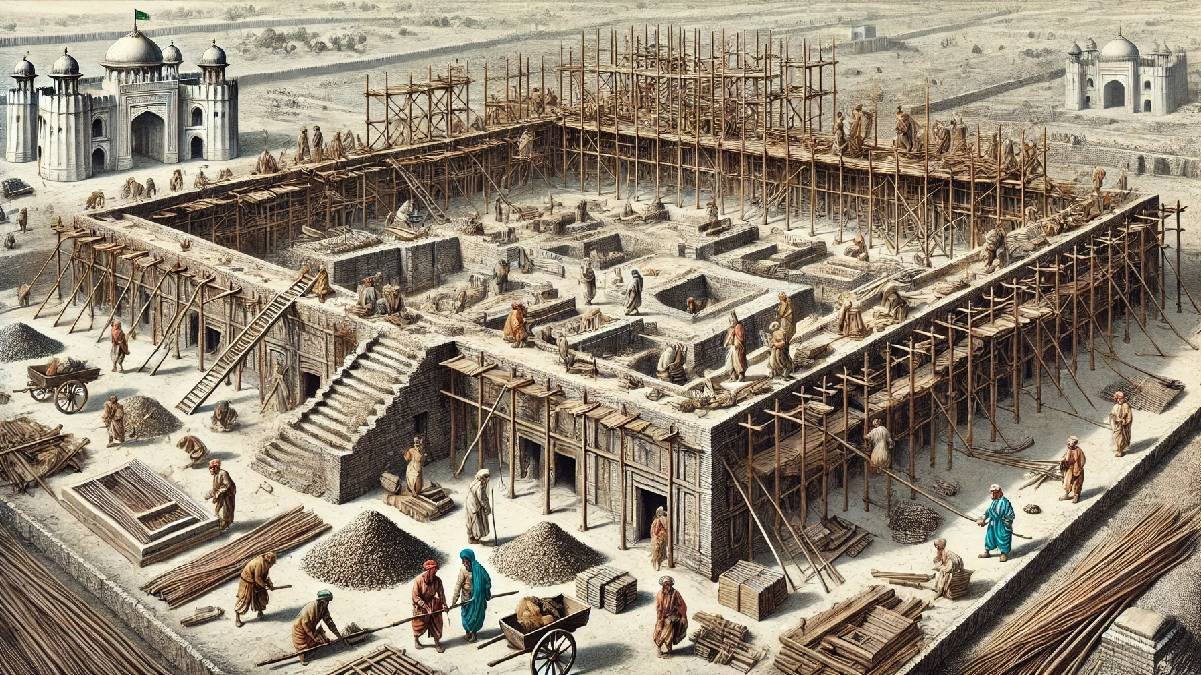
Detailed Timeline of Lahore Fort’s Construction
Ancient Origins
The site of Lahore Fort has been inhabited since antiquity, but the exact origins are unclear. Early references suggest it existed in some form during the 11th century.
Mughal Period (1556–1707)
1556–1605 (Akbar the Great)
Major reconstruction and expansion began under Emperor Akbar. He transformed the existing mud-brick structure into a formidable fort using bricks and laid the foundation for its Mughal architectural style.
1605-1627 (Jahangir)
Jahangir contributed to the fort’s development by adding gardens, palaces, and the Picture Wall.
1628-1658 (Shah Jahan)
Shah Jahan further enhanced the fort with luxurious additions such as the Sheesh Mahal, Naulakha Pavilion, and Diwan-i-Khas, using white marble and intricate decorations.
1658-1707 (Aurangzeb)
Aurangzeb added the grand Alamgiri Gate, which remains one of the fort’s most iconic features.
Sikh Period (1799–1849)
1780–1839 (Maharaja Ranjit Singh)
During the Sikh rule, Ranjit Singh made several modifications and additions, including the Mai Jindan Haveli and other structures reflecting Sikh architectural style.
British Period (1849–1947)
The British used the fort primarily for military purposes and made some alterations to accommodate their needs. They also undertook efforts to preserve the historical structures.
Post-Independence (1947-Present)
Since Pakistan’s independence, the fort has been a focus of preservation and restoration efforts to maintain its historical and cultural significance.
Periods of Building Activity and Major Renovations
Akbar’s Reign (1556-1605)
Initiated the extensive rebuilding of the fort, transforming it into a major Mughal stronghold.
Shah Jahan’s Reign (1628-1658)
Marked by significant architectural advancements, with the addition of opulent structures and decorative elements.
Sikh Rule (1799–1849)
Characterized by the addition of new buildings and modifications to existing ones, reflecting the Sikh influence.
British Period (1849–1947)
Focused on functional alterations and preservation.
Why is Lahore Fort Famous?
Lahore Fort is famous for its rich history, architectural grandeur, and cultural significance
Which Mughal king lived in Lahore Fort?
Several Mughal emperors resided in Lahore Fort during their reigns, including:
- Akbar the Great initiated a major reconstruction of the fort.
- Jahangir is known for adding gardens and the Picture Wall.
- Shah Jahan is famous for his luxurious additions, such as the Sheesh Mahal and Naulakha Pavilion.
- Aurangzeb: built the grand Alamgiri Gate.
What is the history of the Royal Fort?
Lahore Fort, also known as Shahi Qila or Royal Fort, has a history that spans several centuries:
Ancient Origins: Mughal Period (1556–1707); Sikh Period (1799–1849); British Period (1849–1947): Post-Independence (1947–Present):
How many acres is Lahore Fort?
Lahore Fort covers an area of approximately 20 hectares, which is equivalent to about 49 acres. This vast area includes numerous palaces, gardens, and other structures, reflecting its importance as a major historical and cultural site.
Conclusion
Lahore Fort, with its origins dating back to antiquity and its major developments during the Mughal era, stands as a testament to the region’s rich history and architectural grandeur. The fort’s intricate designs, from the lavish Sheesh Mahal to the grand Alamgiri Gate, reflect the artistic and cultural zenith of the Mughal Empire. Subsequent modifications by the Sikh and British rulers add layers of historical depth, making the fort a mosaic of architectural styles and cultural influences. Its status as a UNESCO World Heritage Site underscores its global importance as a cultural treasure.




